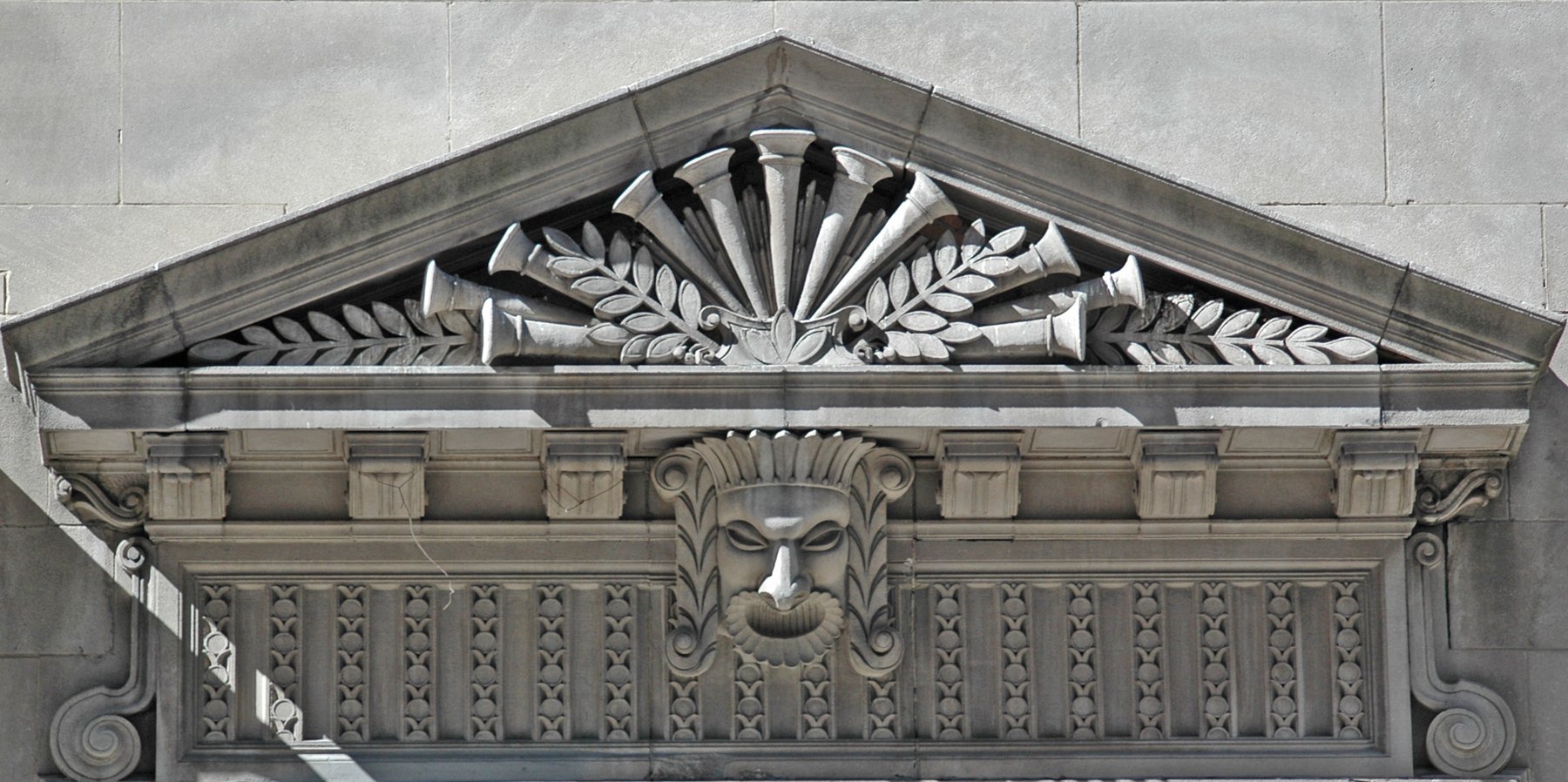#1043. Neoclassical Façade with Mascaron: Triangular Pediment with Laurel Ornament
The image showcases a classical architectural element — a triangular pediment in the neoclassical style. This expressive façade detail is crafted from light-colored stone. The upper part of the pediment is decorated with a fan-shaped ornament featuring laurel branches radiating from the center, symbolizing glory and victory — a motif commonly found in classical architecture.
Below the pediment lies a richly adorned entablature with a row of decorative brackets (modillions). The center of the frieze features a striking mascaron detail in the form of a bearded male head, possibly representing an ancient deity or mythological character. The massiveness and severity of this mask give the façade a majestic, somewhat austere character.
The lateral elements are decorated with volutes and geometric ornaments, while the lower section has a rhythmic row of vertical elements that create an interplay of light and shadow. All these features are typical of neoclassical architecture, which seeks to reproduce the aesthetics of ancient temples. The craftsmanship of the stone carving demonstrates a high level of detail and technical excellence.
